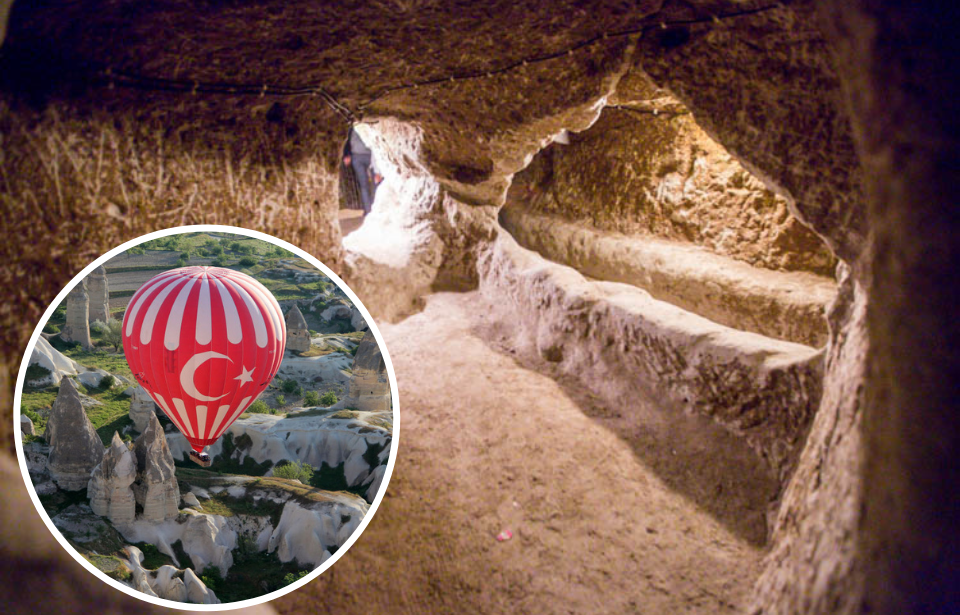What would you do if you discovered a long-lost treasure inside your own home? That’s precisely what happened to a Turkish man in 1963, when with the swing of a hammer, he unearthed the discovery of a lifetime hidden behind the walls of his house.
The man found a mysterious room that led to an incredible maze of underground tunnels and chambers, perhaps one of the greatest abandoned places ever discovered. Dubbed the Derinkuyu Underground City, the ruins revealed fascinating details about an ancient civilization.
Turkey’s largest hidden city
Derinkuyu is just one of several underground cities in the Cappadocia region of Turkey. The subterranean settlements were built underground to house thousands of people – including their livestock – in case of an attack. There are 200 underground cities in Cappadocia, but with eight levels, Derinkuyu is the deepest ever discovered.
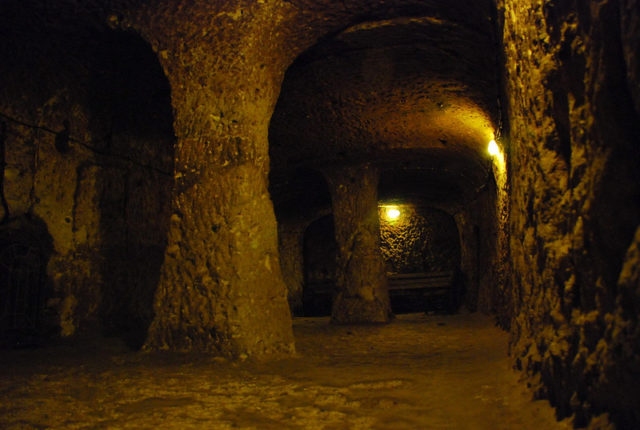
Derinkuyu reaches 280 feet below the ground and could house 20,000 people at one time – far more than other underground dwellings unearthed in the area. The city was carved from the soft volcanic rock of the Cappadocia region of Turkey. For millennia, local residents have relied on the craggy volcanic rock formations to create small storage rooms, temples, and hideouts. Many of them are only two stories deep. Derinkuyu, on the other hand, is eight stories deep!
Who built Derinkuyu?
Historians are still torn over who built the underground city. Some archaeologists believe the oldest parts of the ruins could have been created as early as 2000 BCE by the Hittites. The Phrygians could also be responsible for building Derinkuyu in the 7th century BCE. Some even claim it was built by early Christians in the first centuries AD.
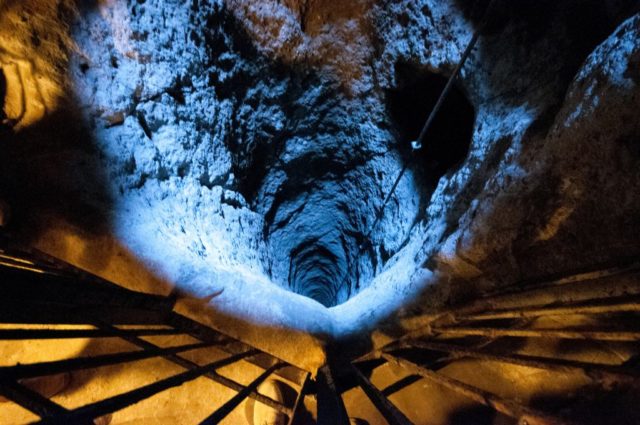
The residents and builders behind Derinkuyu were able to achieve such impressive and sprawling tunnel networks thanks to a very specific kind of stone found in Turkey. Millions of years ago, ash from a volcanic eruption covered everything – creating pyramid-shaped “lava domes” made from a softer kind of rock.
The Hittites and other groups began carving the stone pyramids at the surface of the rock formations, called hoodoos or fairy chimneys. These structures are made from lava domes that have been hollowed out and made into livable spaces. Soon, it was realized that the stone below their feet could also be soft enough to dig into and create an impressive underground community.
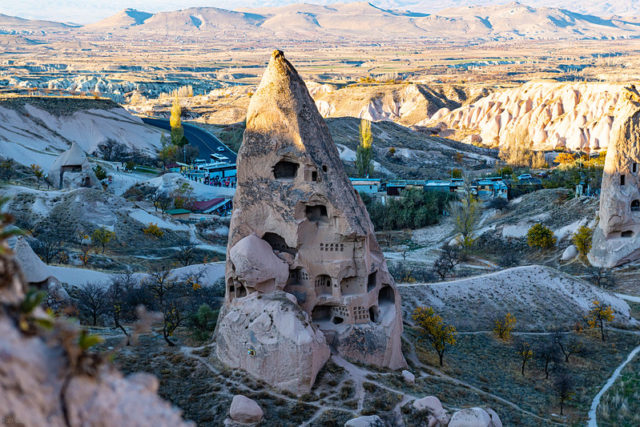
Underground cities like Derinkuyu were built to house an entire city underground in case of foreign attack – making it look like the settlement had been abandoned. The caves protected Christians from the Mongolians during their invasion of Timur in the 14th century. Some even found shelter there throughout the Ottoman Empire and during the Greco-Turkish War (1919-1922) until the caves were left empty in 1923. The city was all but forgotten until it was unearthed again 40 years later.
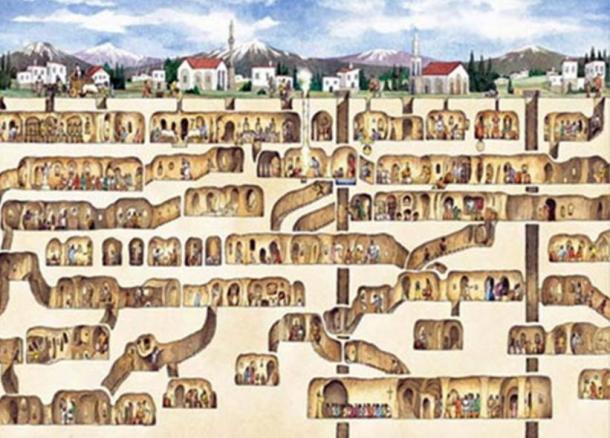
The city of Derinkuyu remained mostly incomplete until the Byzantine era when its inhabitants connected the series of caves and used it to protect themselves from the Muslim Arabs during the Arab-Byzantine wars between 780–1180 AD. Even during times of war, the caverns gave citizens a semblance of normalcy.
What was the hidden city used for?
Archeologists have discovered remains of wine cellars, chapels, oil presses, large dining rooms, and stables that housed livestock. Over 15,000 ventilation shafts provided water and fresh air to villagers living below the surface. Citizens would be sealed inside the underground city by large stone rolling doors that kept unwanted visitors from gaining entry into the fortress.
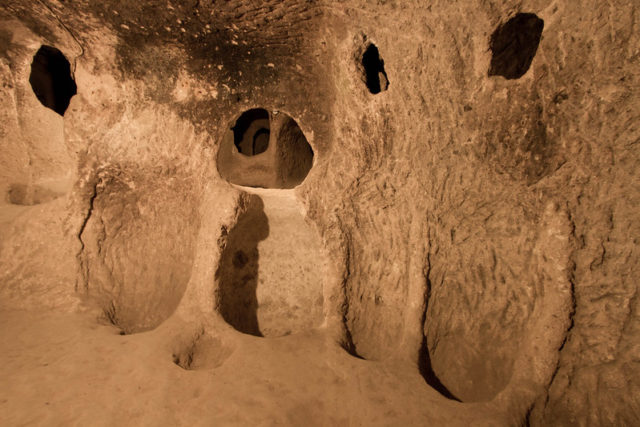
Visitors can now explore the 40 meters of town that have been excavated, just a fraction of the massive complex. Though the first entrance to the cave was discovered in 1963, over 600 separate entries have been found hidden in other homes as well!
More from us: Dupont Underground: This Streetcar Platform Is Now Home to Artistic Expression
Planning to visit Derinkuyu on your next trip to Turkey? Steer clear if you are claustrophobic or hate tight spaces, but enjoy exploring the maze-like ruins located just 20 minutes from Nevşehir. The area is also popular with hot air balloon enthusiasts.
